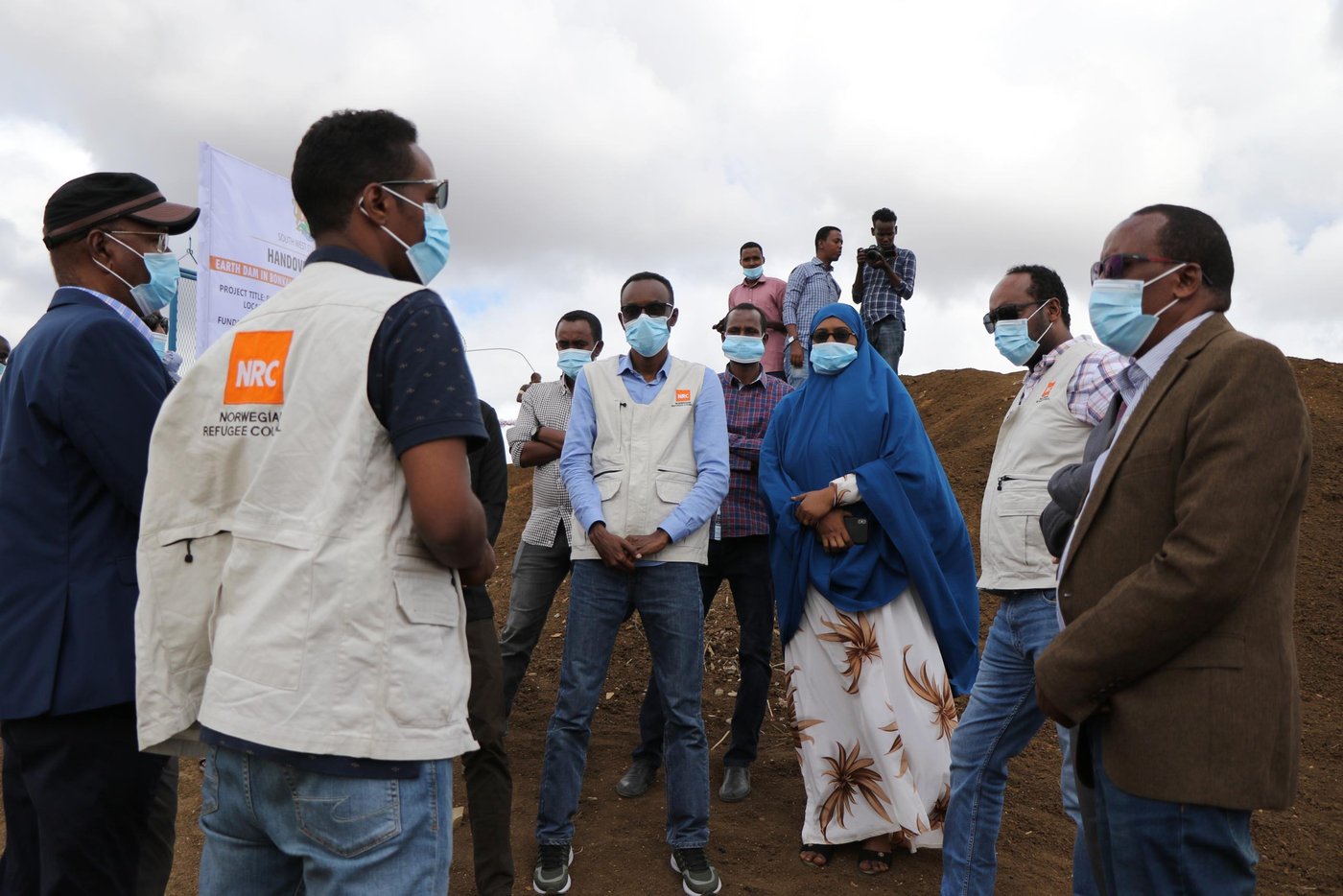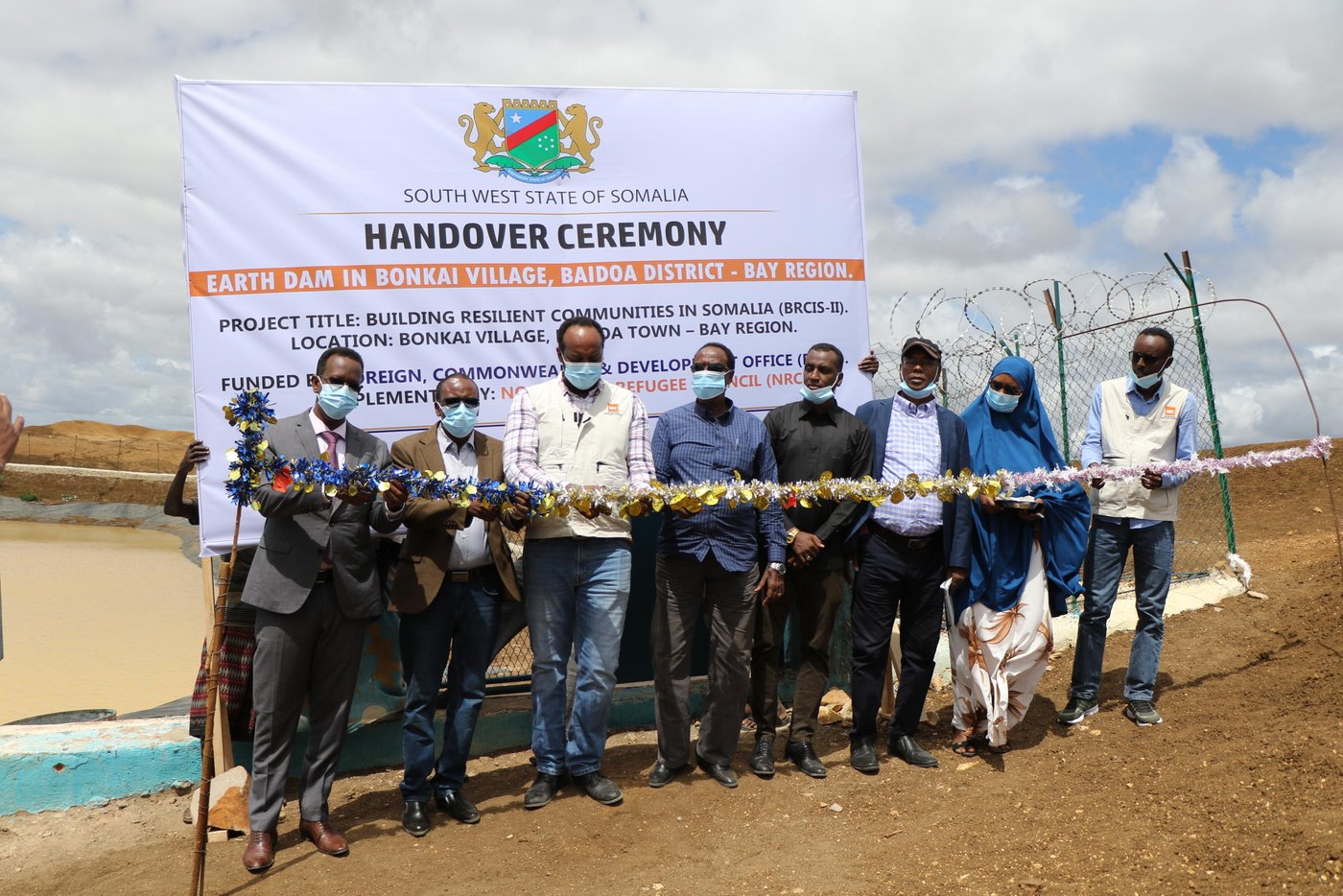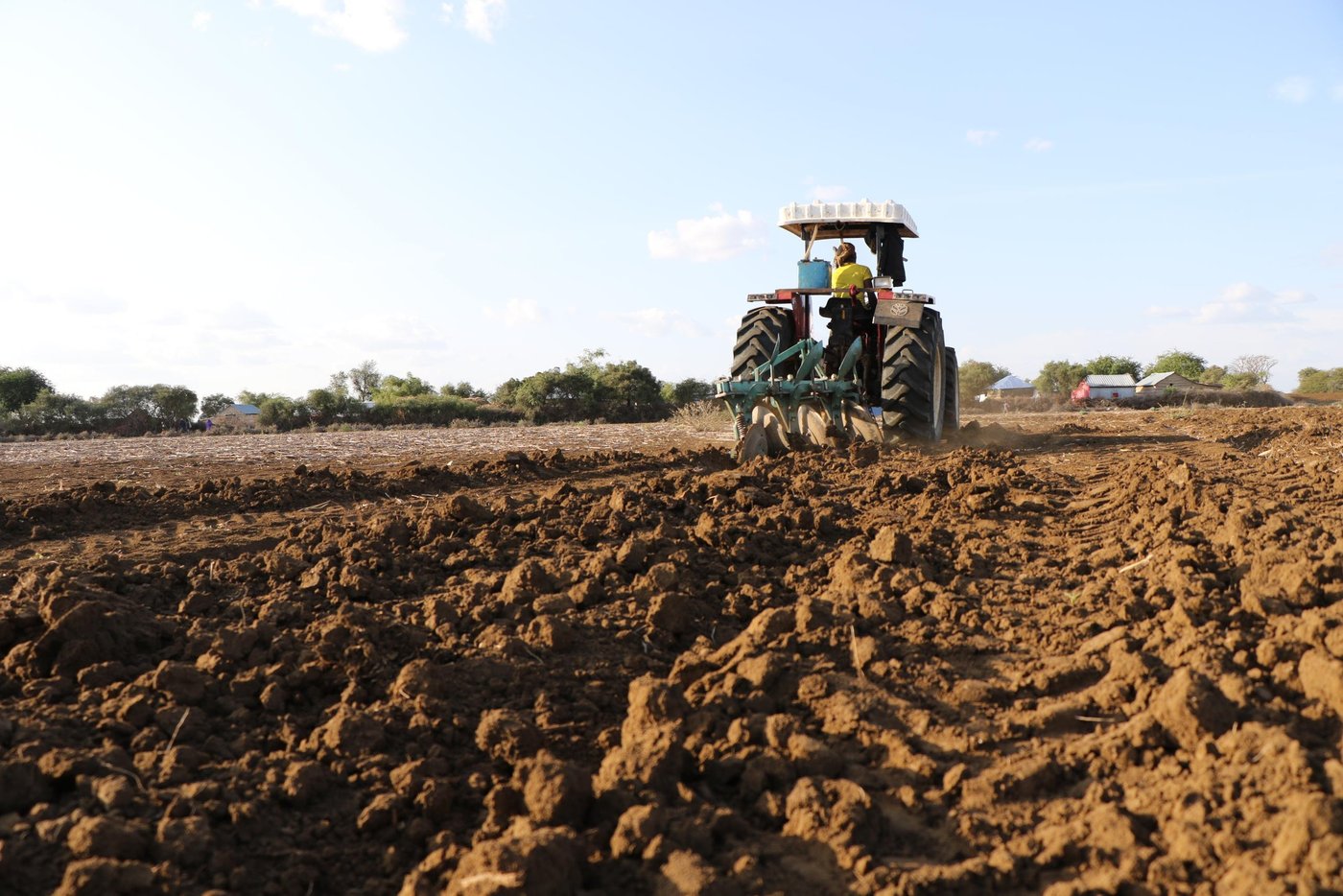Drought and other extreme weather events are killing off crops and livestock – and threatening the lives of the people who depend on them. Drought also diminishes people’s incomes, making it harder for them to find ways to support themselves and their families.
NRC works to support refugees and displaced people in over 30 countries around the world, including Somalia. Support our work today
Bonkai village in the Bay region of Somalia is one of the areas facing these challenges.
“The severity of the droughts present challenges beyond our traditional coping capacity,” says area chief, Osman Hassan Jibril.
“Women and children suffer the most as they travel great distances to fetch water and carry it on their heads. Season after season we cultivate farms but come back home empty handed due to failed rains. Our [goats and sheep] also die. The few that remain lack food and become weak and unproductive.”
Farmers get organised
But the local farmers had a plan.
In 2013, the Norwegian Refugee Council (NRC), through the Building Resilient Communities in Somalia (BRCiS) Consortium, helped farmers to set up an agro-cooperative across four villages – Bonkai, Ismodnoy, Lambule, and Waranle. This gave them more purchasing power, peer support, and access to in-house loans, meaning that the farmers had more control over their futures.
In 2020, the UK’s Foreign Commonwealth and Development Office (FCDO) generously supported BRCiS and the local cooperative of farmers, enabling them to reach their goal.
Together they designed an integrated agricultural and water project. Through farming technique training and NRC’s help in constructing an earthfill dam that provides easy access to water, the Bonkai community and nearby villages are becoming climate-ready.
Learning sustainable farming techniques
Through a series of “Good Agricultural Practices” trainings held by BRCiS, farmers learned sustainable and climate-smart methods: a welcome addition to their traditional farming techniques. They also received certified drought-resistant seeds for crops like legumes and sorghum. These provide essential nutrients for the local population.
Now, trained farmers are using homemade pesticides and manure, which conserve the environment and are available anywhere at low costOsman Hassan Jibril
Jibril says: “Before the training, farmers used pesticides to control pests and inorganic fertilisers to stock up soil nutrients. But now trained farmers are using homemade pesticides and manure, which conserve the environment and are available anywhere at low cost.”
Despite improved agricultural practices, however, water access remained an issue.

Earthfill dam brings water closer to home
Local livelihoods in regions fraught with drought are at constant risk, especially as climate shocks become more severe. BRCiS and local communities decided the most durable solution would be an earthfill dam, conveniently situated for easy access to water. NRC teamed up with them to build it.
“Before the construction of the earthfill dam, my family didn’t have access to water,” says Habiba Abdi Issack, who lives with her seven children in Bonkai village.
“We had no other option but to walk long distances every day, sometimes 12 km to collect water. But now everything is good, and our life is getting much better. We have water close to our houses. I can spend the extra time I save with my children to take care of them.”
Habiba and her family are one of 400 households – around 2,400 people in total – who have benefitted from the dam’s installation. Since its completion in October 2020, it has already greatly improved people’s lives.

Boosting productivity
“As agro-cooperatives, we also use the water from the earthfill dam to irrigate our farms,” explains farmer and father of five, Ibrahim Salad. “We can now grow various crops like tomatoes, onions, spices, sorghum, cowpeas, and maize.”
The earthfill dam has boosted our productivity, and we are in a much better position than last seasonIbrahim Salad
“The earthfill dam has boosted our productivity,” continues Salad, “and we are in a much better position than last season. We produced a huge amount of harvest. We are ambitious to increase what we produce so we can sell surplus produce in Baidoa and the surrounding areas. My family’s purchasing power has increased, and now I can meet all the basic needs of my family.”
By meeting its water needs in a holistic way, the community has succeeded in creating a cost-effective and climate-sensitive system, ensuring everyone has what they need. And in the face of competing uses of water – domestic, crops, and livestock – residents now have a reliable source.

Into the hands of the community
When the earthfill dam was completed, it was officially handed over to ministries and local community members.
Minister Idow, the South-West State Minister of Agriculture and Irrigation, attended the handover ceremony and highlighted the need to maintain the dam.
“It is important to take care of this dam and the surrounding environment and to tackle the environmental issues that are frequently recurring,” he said. Minister Idow thanked the FCDO for their continued support of these important efforts, and NRC for their valuable contribution in building the dam.


